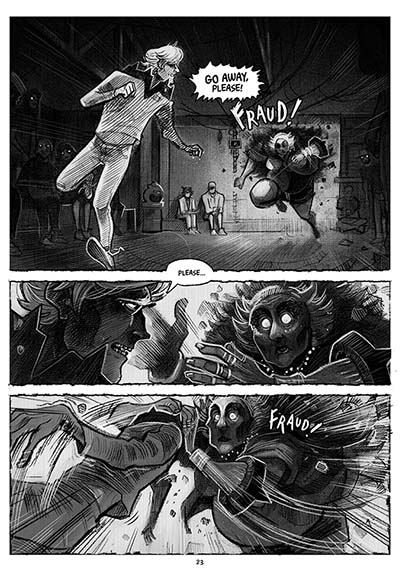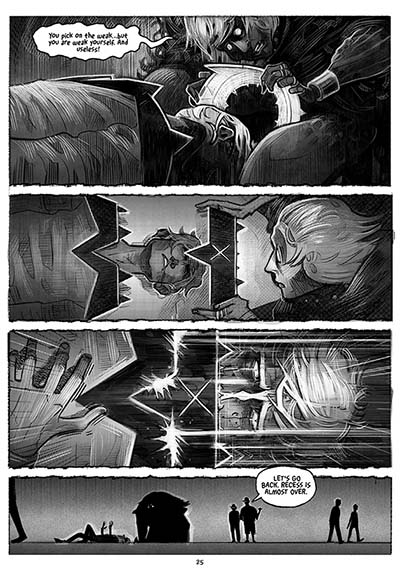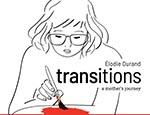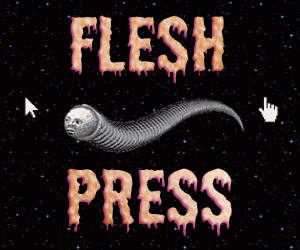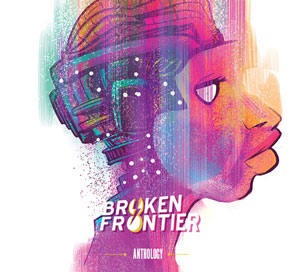Imagine attending a school with violent teachers, barbed wires fences, and torture devices. Worse, imagine being unable to remember how or why you ended up there. Introducing Shadowplay: Volume 1: Midnight School, a thrilling debut from Brazilian graphic novelist Sam Fonseca. While class is a nightmare, it’s the psychological horrors beneath the surface, like self-doubt and paranoia, that are the real threat in this world where shadows only grow stronger.
The opening panels of Shadowplay leave little to the imagination in terms of the brutality of the main setting, this being the school grounds. Against the blacks and greys of rows after rows of desks, sit the students, all too wary or conditioned to question their environment. However, this is all about to change; one boy is illuminated, as he stands up, and requests his mother. He wants her to bandage his hands, which are bleeding heavily. Around his neck? A bear trap. Getting more and more panicked, the boy begs his teacher for help, only to be answered by the same resounding words: ‘you’re going to be left behind’.
It’s impossible to go too much into the detail of the narrative without entering spoiler territory, but suffice to say, the juxtaposition of the surreal and the mundane throughout Shadowplay is extremely effective. The familiar staples of a classroom, like chalkboards, books, and neatly aligned desks, are rendered alien through the gratuitous cruelty inflicted upon the children. There’s a subtle balance between recognisable tropes and nightmarish distortions, creating a sense of inevitability, as though the violence at this school is not only accepted but institutionalised. Readers are uncomfortably forced to confront a world where violence is the norm.
Visually, Fonseca uses sharp contrasts and expressive linework to heighten the reader’s sense of unease, making the panels shocking and highly effective. Yet Shadowplay is not mere shock for shock’s sake. The psychological impact is arguably the most horrifying, like the gnawing paranoia, the loss of memory, and the sense of being trapped within rules you never agreed to. In many ways, Fonseca simply taps in to a universal fear: the loss of childhood innocence and making sense of authority when its logic is hidden or cruel.
As the narrative unfolds, the reader is left with questions rather than answers. Who benefits from this cruel system? Are the students complicit in their own suffering? Is the school a literal place, or a metaphorical space of repression and conformity? Fonseca offers no easy answers, leaving readers intrigued for more.
Samuel Fonseca (W/A) • Top Shelf Productions, $24.99
Review by Lydia Turner






